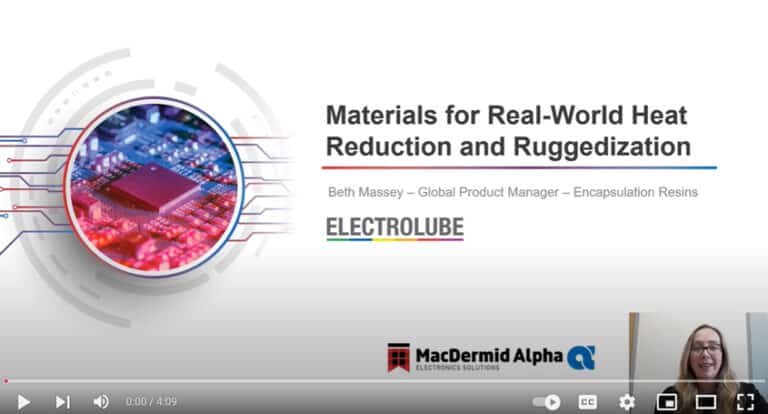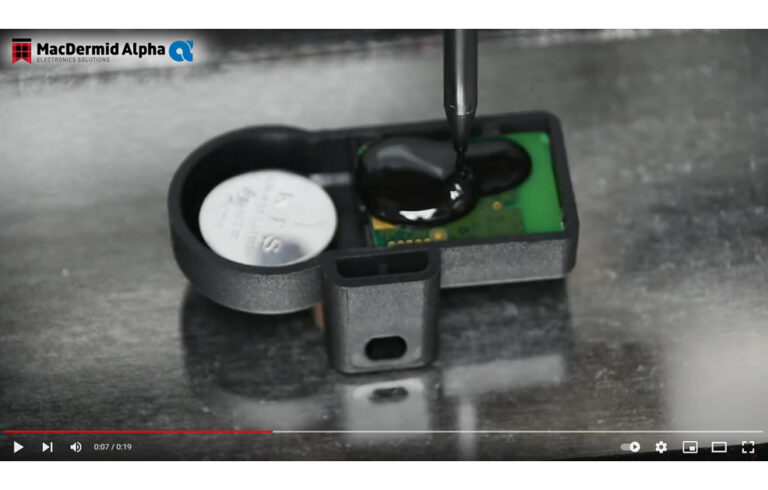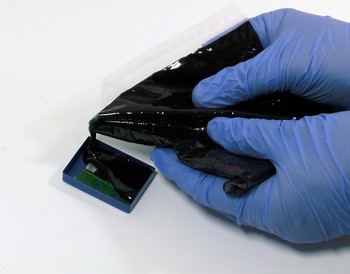In my latest blog, I’m going to depart from my usual format of providing ‘five essential facts’ about the choice and application of conformal coatings. Instead, I’m going to provide an account of a specific customer problem – no names mentioned, of course – that brought into question the adhesion performance of a coating they had been using successfully for some time.
This problem, and its eventual solution, illustrates rather well how good record-keeping, batch traceability and the auditing of suppliers for quality control compliance can go a long way to help resolve manufacturing issues.
Always up for a challenge – and not wanting to ignore any production-related issue that appeared to cast a shadow over the performance of our products, we here at Electrolube donned our detective hats and, with spyglasses at the ready, set about to discover the causes of this particularly challenging de-lamination problem. But first, a bit of background.
Our customer – a multinational firm with sites around the world – contacted us about a coating they had been using without any problems for quite some time, but for some bizarre reason was “no longer sticking” to their boards. They reported that a newly delivered batch of this conformal coating, when applied, could be peeled from the solder mask areas in a single sheet. Our preliminary queries revealed that there had been no changes made to the coating process itself; so, was the coating at fault, or was there something else we were missing?
Delving a little deeper, we discovered that our customer was using this batch of coating material at several of its sites, both within the same country as the ‘problem’ site, as well as sites located in other countries. It turned out these other sites had no issues to report regarding the coating, and confirmed that they were experiencing neither the de-lamination problems we were investigating, nor indeed any problems relating to a lack of adhesion. It was time to check the records.
Following a search through their database, the customer discovered they had coated four different styles of boards using the same batch of conformal coating material. Significantly, however, all of the ‘adhesion’ issues were confined to a single board style. Moreover, these adhesion issues began to be reported and recorded at about the same time.
On checking the serial numbers of the coated boards it became apparent that the adhesion issues all began on a batch of bare boards that had been obtained from a new vendor as part of a cost-cutting measure. Samples of these incoming bare boards were subsequently analysed and found to have a surface energy of 26 dyne/cm, much, much less than the 40 dyne/cm level recommended for good adhesion.
Our customer then decided perhaps it was high time to audit the new board supplier. During this process, they found many corners had been cut to save time and money, but two things, in particular, stood out. Firstly, the board shop was performing multiple passes through a UV oven to ‘cure’ the solder resist, instead of the single recommended UV pass and a secondary thermal bake. Secondly, the auditor noted a ‘shiny film’ floating on the surface of the rinse bath during the final rinse process.
Indeed, each UV exposure was found to reduce the bare board surface energy by 2 dyne/cm, while the final rinse was found to contain significant amounts of oils and lubricants used during the manufacturing process. By eliminating the additional UV processes, implementing the recommended thermal cure and ensuring a clean final rinse process through careful monitoring, the supplier was able to produce boards with a requisite surface energy greater than 46 dyne/cm – enough to ensure excellent adhesion of the conformal coating.
Quite apart from the important role that good record keeping played in this customer’s problem-solving exercise, there are a number of lessons to be drawn from our customer’s experience and which, I hope, you’ll take onboard as and when you embark on the search for new suppliers.
Firstly, incoming bare boards will provide an important determinant as to whether or not your coating achieves good adhesion. Remember, perfectly sound incoming boards can be made bad during the SMT assembly process, but bad incoming boards can never be made better!
Secondly, in your purchase specification, state the level of surface energy you require for incoming boards (generally greater than 40 dynes/cm) and do TEST all incoming batches. REJECT any batch if it does not meet with your specifications.
Thirdly, do not be afraid to audit new suppliers and, in particular, their manufacturing processes. Only this way will you feel comfortable that they have a full understanding of what they are making – and how it might impact you should their manufacturing parameters drift out of specification.
Well, that’s all from me for the time being and I hope you have found my columns on coatings helpful and of interest.










